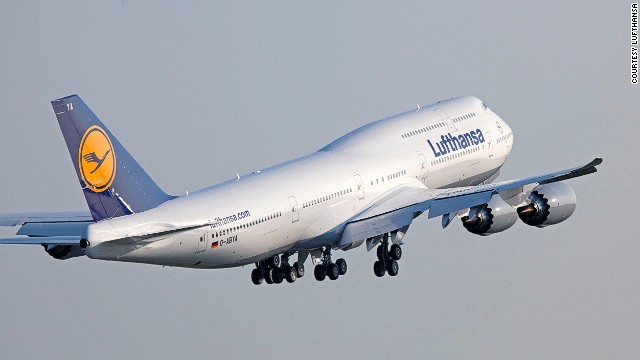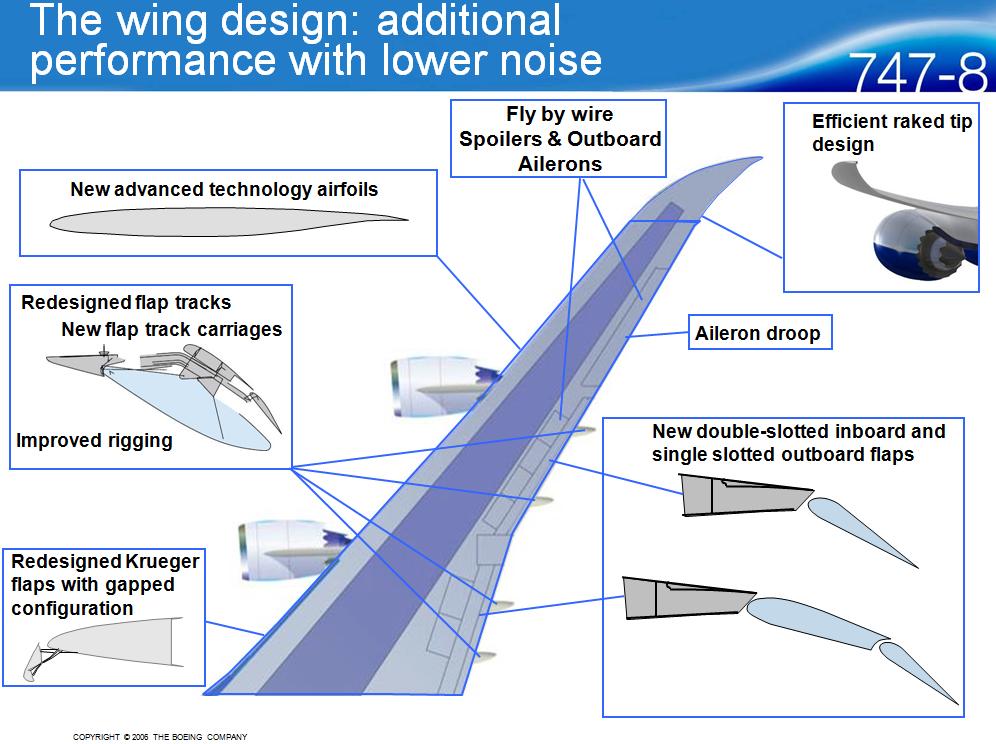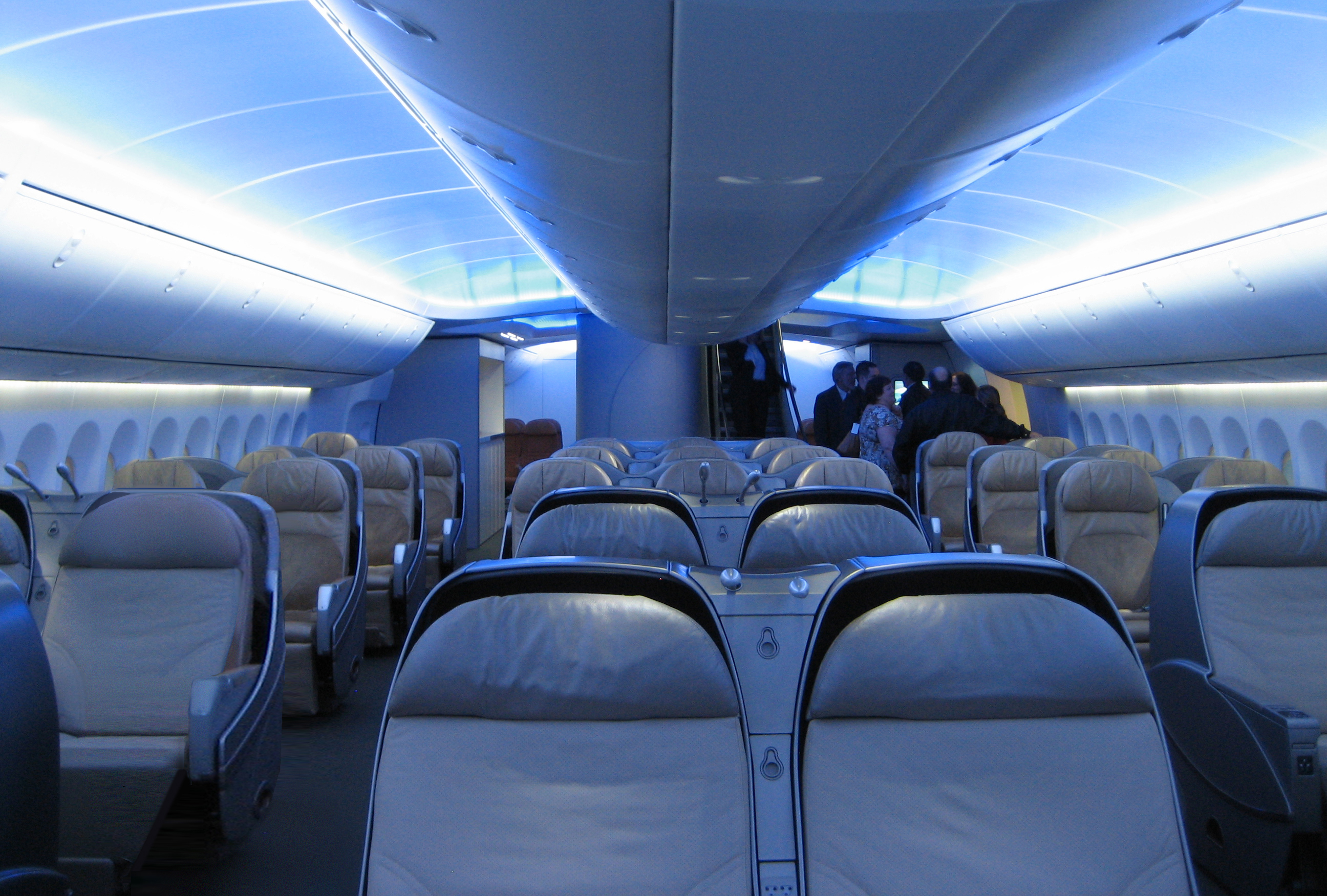We’ve come a long way since the legendary Wright brothers took to the air in 1903. The airplanes of today symbolize the remarkable progress that aerospace engineering has made over the past century. One of the crown jewels of aerospace technology is the Boeing 747, a commercial aircraft that has been flying around the globe for over four decades. Boeing’s latest installment in this historic lineage is the 747-8. Not only is this aircraft Boeing’s best model yet, it also includes certain design features that place it at the frontier of aerospace technology.

Lufthansa has deployed 6 of these aircrafts to serve its customers
The 747-8 preserves the iconic shape of the 747: 4 engines, a ‘hump’ at the head and a simply gargantuan wingspan. The aircraft includes an upgraded engine from its predecessor, General Electric’s GEnx-2B. Four of these provide 267kN worth of thrust each and are “wrapped in nacelles that make extensive use of carbon fiber”. Carbon fiber is used not only in here but also throughout the structure of the aircraft. The positives of carbon fiber are that it has low density and high tensile strength, making it ideal for use in aviation. However, the trade off is that carbon fiber parts are difficult and expensive to repair.
Due to the sheer size of the 747-8, a problem that arises is an increase in the volume of air flow. “We’re heating and cooling slightly larger volumes and we’ve used different suppliers,” says Bruce Dickinson, chief product engineer. Novel technologies have been implemented to solve this problem, such as “an integrated air system controller and high-pressure water separation”.
Furthermore, the 747-8 has accomplished a 30% reduction in noise footprint. “Saw-tooth” chevrons (shown below) are included in “the trailing edge of the fan cowls and inner core engine nozzles”. Developed at NASA, this quirky modification streamlines hot air as it flows from the engine and combines with relatively cooler air from the fan. This streamlining process results in lesser turbulence and lesser noise creation.

The quirky “saw-tooth” chevrons of the Boeing 747-8, developed by NASA
Perhaps the most striking feature of an aircraft is its wing. The 747-8 measures a massive 68.4m from tip to tip. The team designing the aircraft made numerous innovations to the wing it had originally not intended. Instead of winglets, Boeing has introduced raked wingtips (shown below) that lead to better airflow around the wing. As a consequence, there is less cruise-drag and the aircraft is more fuel-efficient. Additional design changes can be viewed in the diagram below. Evidently, the engineering team has capitalized on every opportunity to improve performance.

The redesigned wing of the 747-8: innovative and efficient
At the end of the day, who flies on these airplanes? Us! And there’s something in the 747-8, apart from a list of tech specs, for the passenger too. Never before has an airline been so ambient, luxurious and majestic. LED lighting illuminates the cabin, creating a glowing ambiance for the passenger. The curved architecture of the interior makes the cabin feel more spacious and comfortable. The best architectural feature for the passenger though is the addition of a sweeping staircase, connecting the lower and upper decks in a graceful way.

LED lit cabins provide an ambient environment to the passenger
The Boeing 747-8 restores majesty and prestige to the experience of flying. Its technological advancements and passenger-friendly features are evidence of how improvements in design lead to benefits for the environment and for mankind. According to Bruce Dickinson, “testing always uncovers a lot of interesting things”. With Boeing already eyeing the next installment, the 747-9, it will certainly be interesting to see how it tops the 747-8, the queen of the sky.

The Boeing 747-8: Queen of the sky
References used:
http://www.boeing.com/boeing/commercial/747family/747-8_background.page
http://www.cnn.com/2013/04/16/travel/lufthansa-747-8-intercontinental/index.html
